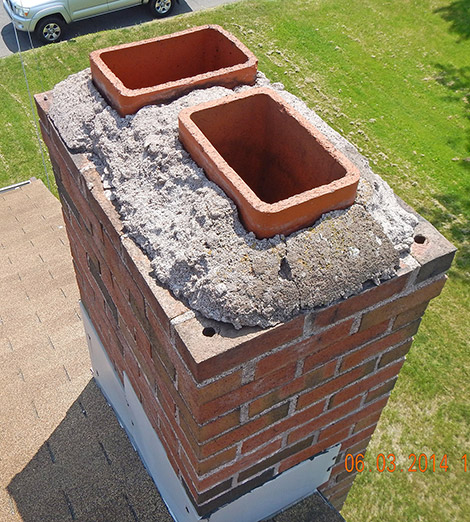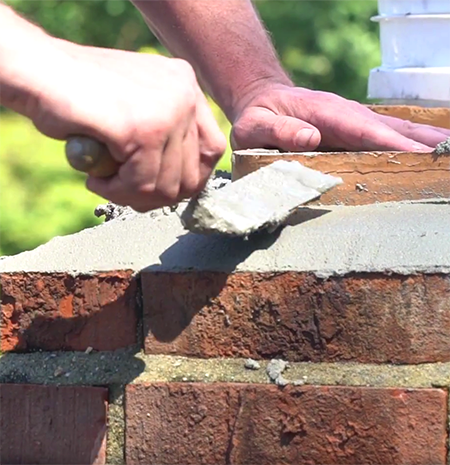Is Your Chimney Crown Cracked or Damaged?
 A chimney crown plays an important role in preventing water damage to your home. This concrete slab or metal plate that sits on top of the highest bricks on the chimney stops water from seeping in between the mortar joints in the masonry. It also hangs over the edge of the chimney so that water will run onto the roof instead of straight down into the joint between the chimney and your home. A cracked or damaged chimney crown, that isn’t fixed quickly, can lead to thousands of dollars in repairs from water damage.
A chimney crown plays an important role in preventing water damage to your home. This concrete slab or metal plate that sits on top of the highest bricks on the chimney stops water from seeping in between the mortar joints in the masonry. It also hangs over the edge of the chimney so that water will run onto the roof instead of straight down into the joint between the chimney and your home. A cracked or damaged chimney crown, that isn’t fixed quickly, can lead to thousands of dollars in repairs from water damage.
Signs of a Cracked or Damaged Chimney Crown?
The best way to find out if your chimney crown has been damaged is through a chimney inspection. Since the crown is located at the top of the chimney, most cracks and damage won’t be visible from the ground. When a professional chimney sweep climbs onto the roof for the inspection, any damage will be apparent.
Without an inspection, the secondary signs of a chimney leak will be the only indication of a broken crown. Signs of a chimney leak include:
A rusted firebox or damper: If metal components in your chimney are rusting, like the damper or firebox, it is an indicator that moisture is getting into the chimney most likely from a leak.
Pieces of broken flue tiles: If you see chips of broken pieces of tile in the fireplace, it is sign that the flue lining is deteriorating. Water entering the chimney is the main cause of deterioration. Using your chimney, when the lining is broken, poses a serious risk. Cracks in the lining can allow stray embers and carbon monoxide to get into your home increasing the possibility of a house fire or carbon monoxide poisoning.
Water damage on ceilings or walls: If you notice discoloration, cracking or peeling on walls or ceilings around the chimney, it is a sign that there is water between the chimney and your home. Before repairing the interior damage, you should address the source of the problem, so that you don’t have to fix the same problem twice.
Crumbling mortar joints and spalling brick: If your chimney has cracked or crumbling mortar joints and spalling bricks or stones, it is a sign that water is seeping into the masonry. Spalling is the term for bricks or stones that are chipped or splintered. A broken crown may be the cause. Left unaddressed, the moisture problem can weaken the structure of your chimney. It is much less expensive to fix a broken crown than to rebuild a chimney that is falling apart.
 How to Fix a Broken Chimney Crown
How to Fix a Broken Chimney Crown
The solution for a damaged chimney crown depends on the type of crown your chimney has and the extent of the damage. If your chimney has a cement crown with only a few hairline cracks, a waterproof sealant may be the right solution. If there are larger cracks, a high bond patching material may be needed. A severely broken cement chimney crown may need to be entirely rebuilt.
If your chimney has a broken or rusting metal chimney crown, it may be necessary to replace it.
Hiring a CSIA-certified chimney sweep to inspect your chimney once a year is the best way to catch a broken chimney cap and prevent the risk of more expensive repairs. Even the cost of rebuilding a chimney cap is much less than the cost of water damage.
Don’t risk the chance of thousands of dollars in damage. Give Northeastern Chimney a call to schedule a spring chimney inspection!


